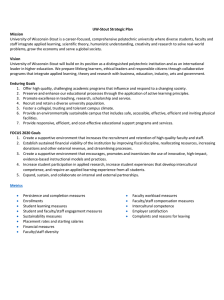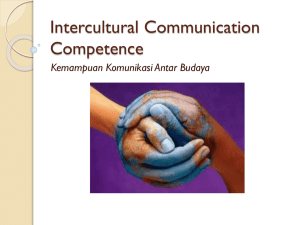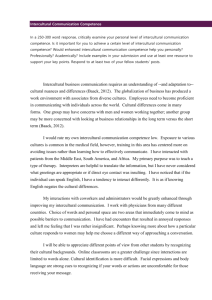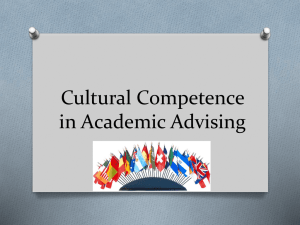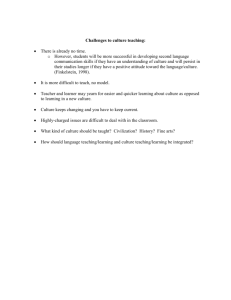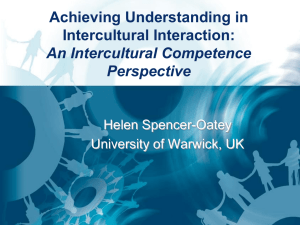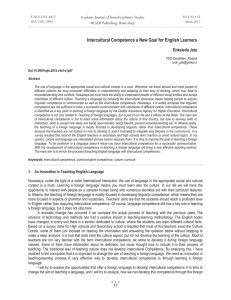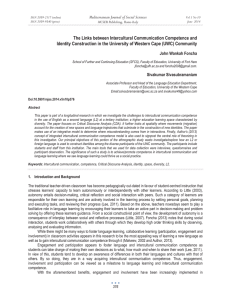Assessment - Kansas State University
advertisement
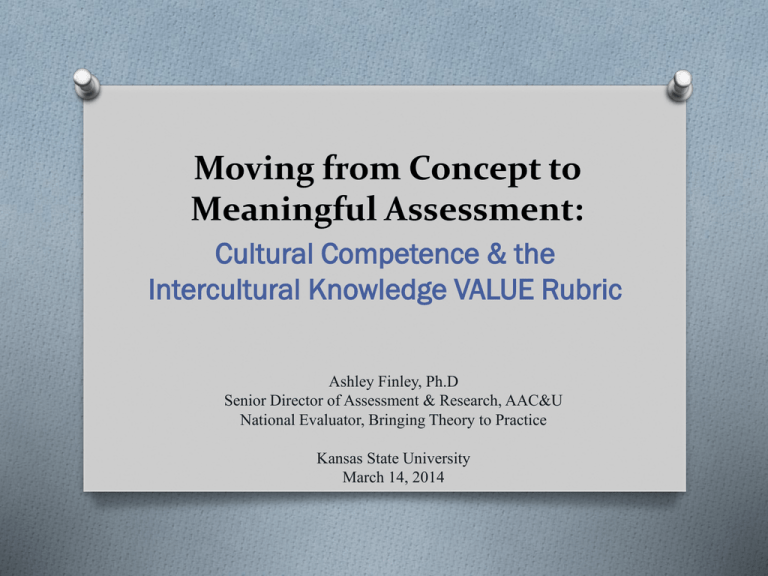
Moving from Concept to Meaningful Assessment: Cultural Competence & the Intercultural Knowledge VALUE Rubric Ashley Finley, Ph.D Senior Director of Assessment & Research, AAC&U National Evaluator, Bringing Theory to Practice Kansas State University March 14, 2014 The problem with program assessment… Curriculum Assessment Outcomes K-State & Intercultural Competence… O The mission of KSU is to foster excellent teaching, research, and service that develop a highly skilled and educated citizenry necessary to advancing the well-being of Kansas, the nation, and the international community. O The university embraces diversity, encourages engagement and is committed to the discovery of knowledge…& improvement in the quality of life and standard of living of those we serve. O the institution dedicates itself to providing academic and extracurricular learning experiences which promote and value both excellence and cultural diversity… O K-State prepares its students to be informed, productive, & responsible citizens who actively participate in advancing cultural, educational, economic, scientific, and socio-political undertakings. Moving from Goals to Expected Outcomes EXPECT to see Expected changes at course level… •Ethical Reasoning & Responsibility •Human Diversity within the US •Global Issues & Perspectives Would LIKE to see Changes at program level related to… •Ethical Reasoning & Responsibility •Human Diversity in US •Global Issues & Perspectives Who needs to be involved at each stage to reach goals? Would LOVE to see • University embraces diversity, encourages engagement & committed to know. discovery • learning experiences promote & value excellence & cultural diversity • students are informed, productive, & resp. citizens who actively participate in advancing cultural, educ., econ., scientific, & socio-political undertakings Resources needed to start or keep going: INPUTS (What is needed for the process?) ACTIVITIES (What will students be asked to do?) Actions needed to produce outputs: OUTPUTS (What counts as good evidence?) OUTCOMES (What should improve as a direct result of efforts that contribute to the long-term vision?) Impact Goals (What is the hope for the future for students, for faculty, for the institution?) Products needed to assess outcomes, “countables”: Expected Changes: short, intermediate Long-term vision for change Resources needed to start or keep going: Actions needed to produce outputs: INPUTS (What is needed for the process?) ACTIVITIES (What will students be asked to do?) •General education •Teaching and learning center •Student affairs •Institutional research •Career center •Alumni center •Engagement with diverse perspectives •Group dialogue •Small group problem-solving or applications •Engagement with contemporary issues, real-life questions OUTPUTS •Critical reflection papers •Research papers addressing real-world problemsolving •Blogs/Wikis •Multimedia Products needed to assess outcomes: OUTCOMES •Intercultural knowledge & competence •Civic engagement •Openness to diversity •Pluralistic orientation •Empathy •Moral development •Civicmindedness Expected Changes: short, intermediate: Impact •University embraces diversity, encourages engagement & committed to know. Discovery •learning experiences promote & value excellence & cultural diversity Intercultural Knowledge & Competence VALUE Rubric O Dimensions O Next Questions: O Knowledge – cultural O What activities currently O O O O O self-awareness Knowledge – knowledge of cultural worldview frameworks Skills - empathy Skills – verbal and nonverbal communication Attitudes – curiosity Attitudes – openness promote intercultural knowledge & competence in courses? O What assignments or demonstrations of learning invite students’ applications of intercultural skills? O How are learning experiences connected over time to make applications increasingly more rigorous? Focusing on Outputs: Intentional Assignment Design O Assignment should enable attainment of criteria O Break down criteria to determine key components for assignment O What should students do with content to meet criteria? O E.g. What are the pieces to be analyzed, compared, integrated? O Will the assignment be used for more than one outcome? O What are the types of assignments that will be most helpful for allowing students to demonstrate competency? Additional Resources O Logic Models: http://www.wkkf.org/resource- directory/resource/2006/02/wk-kellogg-foundationlogic-model-development-guide O AAC&U VALUE Rubrics (direct assessment of learning outcomes, including civic engagement & intercultural competence): http://www.aacu.org/value/index.cfm O Wabash Center for Inquiry in the Liberal Arts: http://www.liberalarts.wabash.edu/studyinstruments/ (Miville-Guzman Universality-Diversity Scale, also Openness to Diversity Scale, others…)
